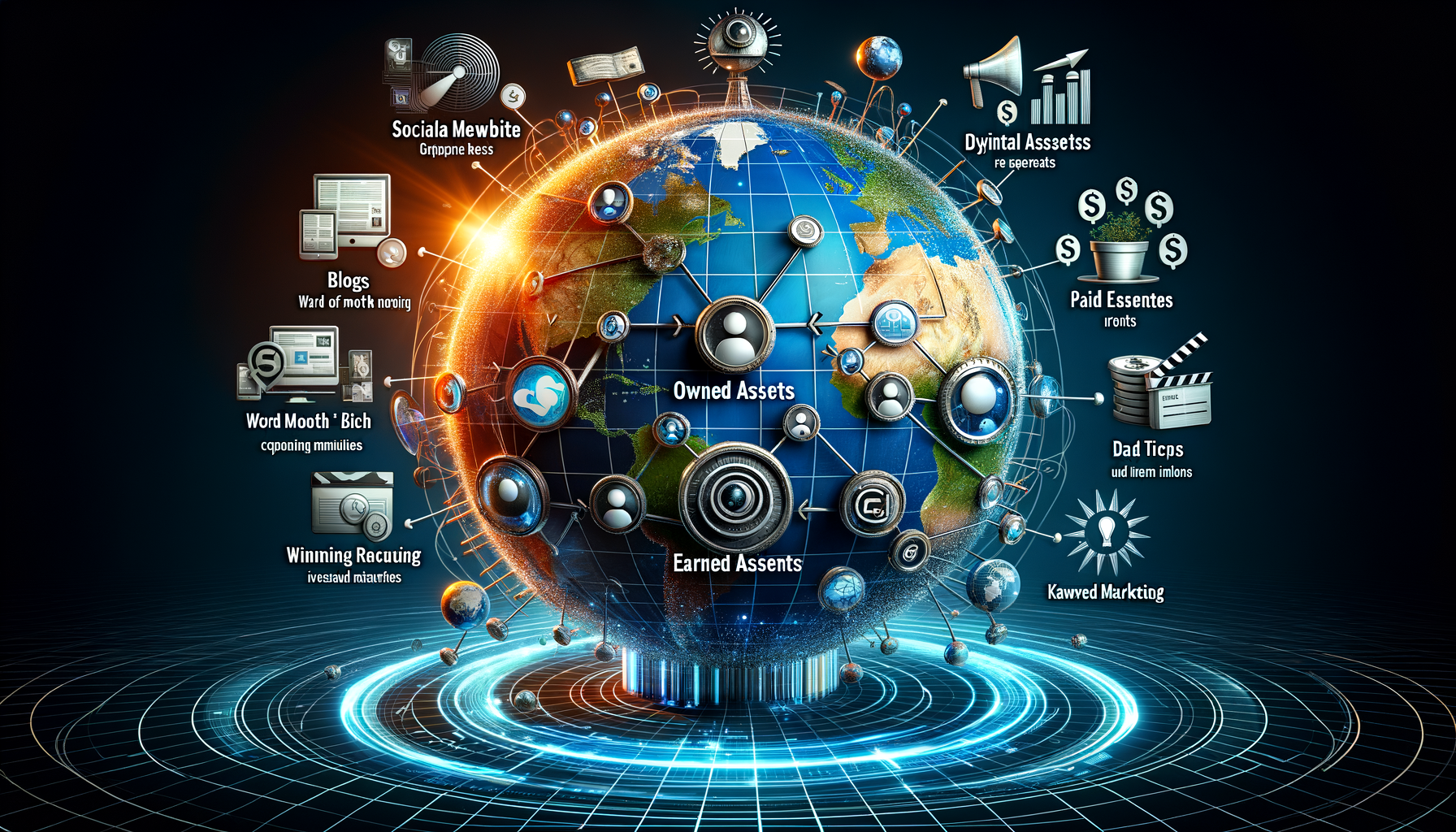“Unlocking the Power of Your Business: A Guide to Maximizing Digital Marketing Assets”

Recognizing and effectively utilizing your digital marketing resources is crucial in today’s rapidly growing digital space. This article will delve into the world of digital marketing, providing a profound understanding of what digital marketing assets are, the different types of assets you might have, their significance, how to assess them, and how to use them efficiently to grow your business.
To begin, a digital marketing asset is any tool, platform, or element that you use to enhance your digital marketing strategy. They can aid in reaching your target audience, promoting your brand, generating sales and, essentially, contributing to your business’s overall growth and success.
However, to exploit these assets thoroughly, we must understand their types and how they function together to bring about desired results.
Various types of digital marketing assets shape the internet infrastructure that businesses need to thrive. Consequently, we’ve divided them into three broad categories: owned, earned, and paid assets.
1. Owned Digital Assets
Owned digital assets are the digital platforms or resources which a business has complete control over, comprising its website, blog, social media profiles, images, videos, and other content stored and distributed across different platforms.
i. Your Website: the central hub of your digital marketing efforts. It’s the platform that combines all of your marketing assets. A well-optimized website, equipped with relevant and engaging content, can attract potential customers, driving traffic and increasing lead conversions.
ii. Email Lists: These are databases of the contact information of potential customers and existing clients. Email lists generate communication channels to connect with your audience on a personal level, providing valuable insights into customer behavior data.
iii. Blog and Articles: These written assets offer information about your products or services, and the industry at large. They can be an effective tool for search engine optimization (SEO), driving organic traffic to your website.
iv. Social Media Profiles: They act as digital storefronts, expanding brand awareness. They provide a platform for businesses to engage and communicate directly with their audiences, helping to build loyal customer relationships.
v. Images and Videos: Visual assets help communicate ideas faster and more efficiently. They’re also shared more often on social media, increasing brand visibility.
2. Earned Digital Assets
Earned assets are those that a business can’t completely control. They’re essentially the recognition a brand receives from third parties, such as customer reviews, shares on social media, press coverage, and organic traffic from keyword rankings on search engines.
i. Customer Reviews: Customer testimonials, reviews, and ratings on review platforms like Yelp or Google act as valuable word-of-mouth endorsements for your brand.
ii. Press Mentions: Positive coverage in the press, through blogs, news sites, or influential individuals, garners significant brand recognition and trust.
iii. Organic Search Engine Rankings: These are free listings on search engine result pages (SERPs) that rank high due to their relevance to the user’s search query.
3. Paid Digital Assets:
These are the digital platforms and channels you pay for to promote your brand, such as pay-per-click advertising, display advertisements, paid influencers, and sponsored content.
i. PPC advertising: You pay a fee each time someone clicks your ad – when set up correctly, PPC drives valuable traffic to your site.
ii. Display Advertising: These are visual banner ads that you place on related websites or blogs to drive traffic to your website.
iii. Influencer Marketing: Here, you pay influential people in your industry to promote your products to their followers.
iv. Sponsored Content: This is paid promotional content disguised as standard posts or articles.
Now, having identified the types of digital assets and their role in your marketing efforts, you’ll need to understand their significance.
Significance of Your Digital Marketing Assets
1. Create Credibility: A well-managed digital presence builds credibility. Consistent, high-quality content spread across different owned digital assets can help shape the audience’s perception of your brand positively.
2. Increase Visibility: Utilizing the right combination of digital marketing assets allows your brand to penetrate the market vertically and horizontally, thus increasing brand visibility and reach.
3. Engage Visitors: User engagement goes beyond the immediate purchase. It’s about creating a user experience that fosters brand loyalty and promotes long-term relationships.
4. Improve Conversions: When leveraged properly, digital marketing assets can aid in generating leads and converting those leads into customers which is crucial for business growth.
5. Measure Performance: Digital assets allow businesses to monitor performance, helping them understand what works and what doesn’t, enabling more strategic marketing decisions.
How to Assess and maximize the use of digital marketing assets:
Performing a digital audit can help you understand which assets work best for your brand. An audit allows you to:
– Identify available assets and categorize them based on type, purpose, and effectiveness.
– Determine what is working – capitalizing on these, and what isn’t – working on improvement or discarding if necessary.
– Map out a strategic digital marketing plan by identifying the optimal combination and usage of these assets.
In conclusion, as a business in the digital age, possessing digital marketing assets is a given – but understanding, managing, and strategically employing these resources is the key to unlocking their full potential. Therefore, ensure you continuously evaluate and optimize your digital marketing assets to survive and thrive in the competitive digital landscape.

Recent Comments